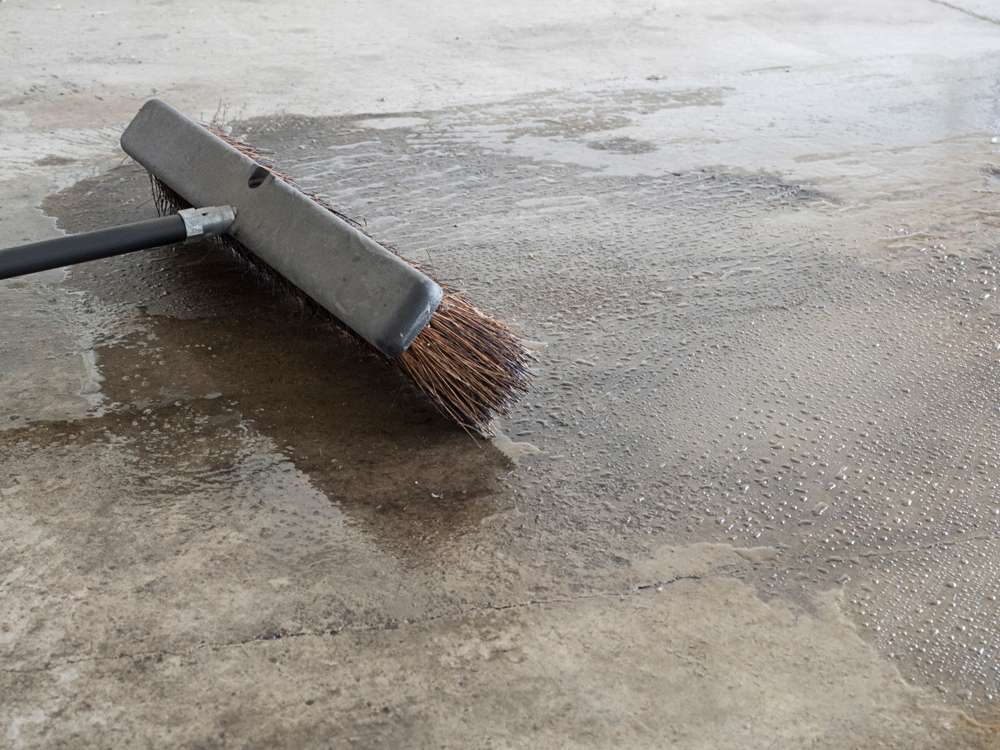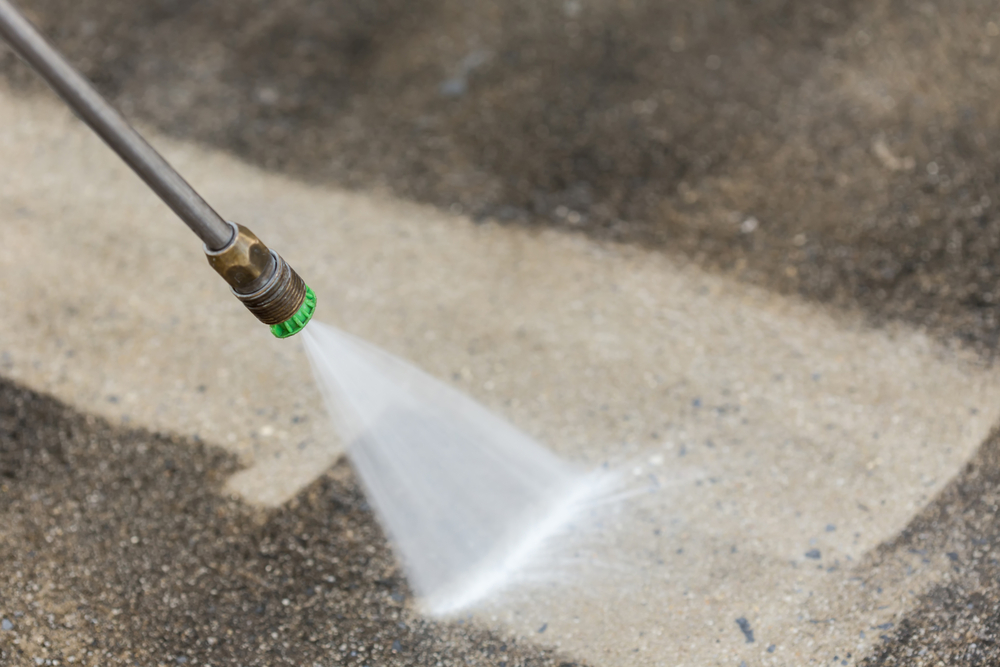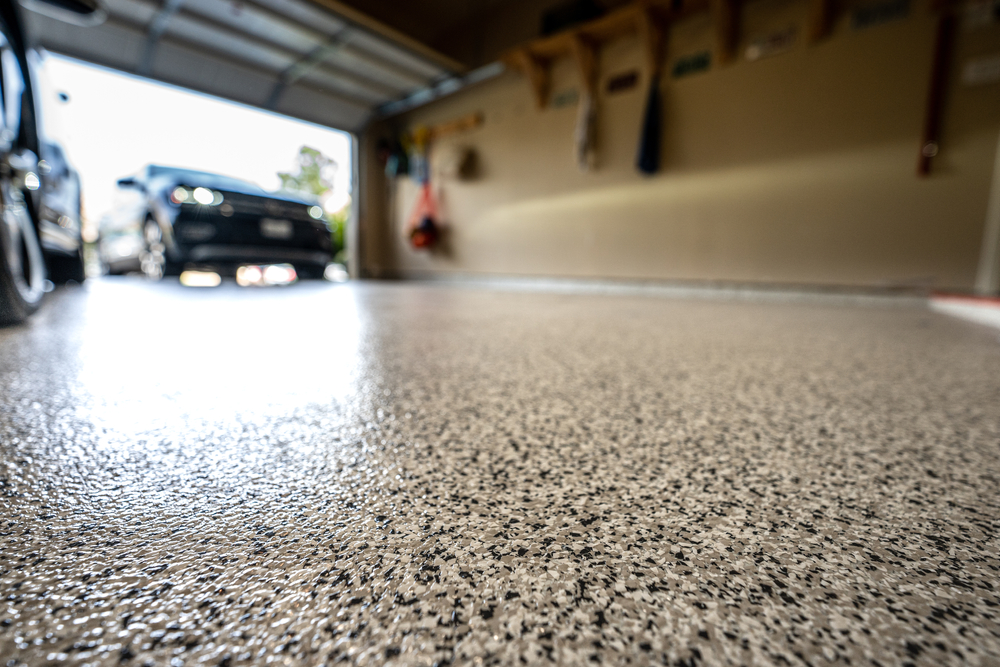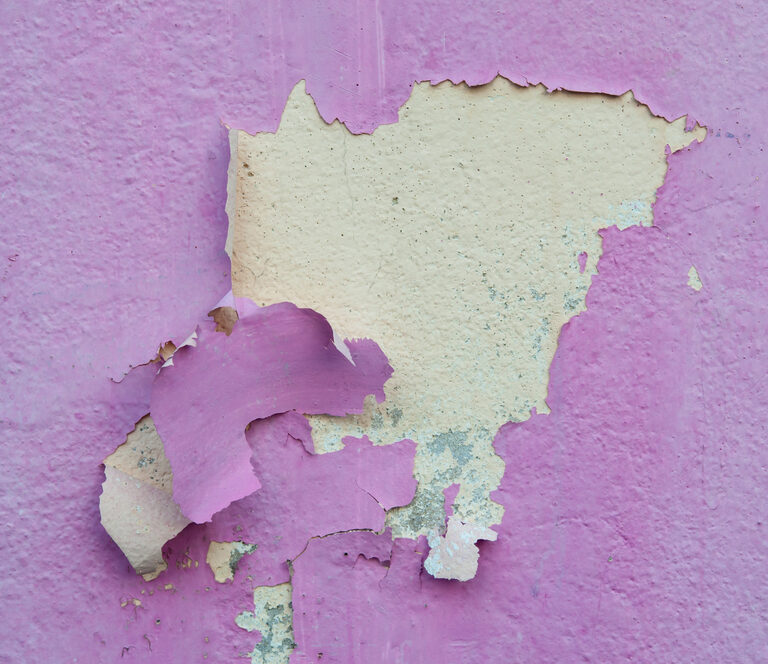Concrete is certainly a low maintenance and inexpensive flooring option. As an added bonus, it couldn’t be simpler to clean. If you’re redecorating your room and accidentally spill some fresh paint onto your concrete surface, you can just cover it with water then scrub it off using detergent and a brush – simple!
It’s fair to say that concrete has many excellent qualities that make it a good choice for your home. But what happens if you allow the paint to dry on the concrete surface? Concrete absorbs paint readily, and that means that removing it can be an extremely frustrating process. Thankfully, we’re here to help you through this process.
Our Helpful Step-By-Step Guide
The good news is that, while removing dried-on paint from your concrete floor is a time-consuming task, it’s far from impossible. So, here we bring you an expert’s inside guide on how to remove paint from concrete, so you can get the job done yourself without having to call in professional help.
Step One – Preparing the Concrete

The first step to removing paint from a concrete surface is to deep clean it, then let it dry. Before you begin your cleaning project, remember to put on protective clothing, like a respirator and goggles, so you’ll be safe from lead or paint fumes.
- Use a vacuum cleaner or broom to clean any debris or dirt from the area. This makes the process of cleaning paint from your surface simpler.
- Make up a solution of soap and warm water. Alternatively, you can use a TSP (trisodium phosphate) alternative. We recommend this industrial cleaning solution from Simple Green.
- crub down the surface using a wide-wire brush.
- Allow the solution to dry for around 2-3 hours.
Step Two – Apply Paint Stripper
Once your concrete surface has been cleaned, you may notice that some of the paint has begun to chip away. Scrape as much off as you can, then apply a good-quality paint stripper (like this variety from Citristrip) to the remainder of the area.
If you prefer, mineral spirits or turpentine can be used instead, but if this fails, use a paint stripper which has specifically be recommended for use on concrete.
Step Three – Allow the Paint Stripper to Set
The paint stripper will need time to set and start to work effectively. How long you’ll need to leave it on the surface will depend on how affected the surface has been by paint. Paint stripper can be left on surfaces for anything from 30 minutes to 8 hours or longer.
Note, though, that applying paint stripper when the weather is extremely hot or windy is a bad idea, as it could dry prematurely.
Step Four – Scrub and Wash the Surface

Once the paint stripper has set, use the wide-wire brush once more to scrub the loose paint away. You should continue until there is no more paint coming off the surface.
If you are removing latex paint, you should use soapy warm water while you scrub as this should be adequate. On the other hand, if the paint you’re removing is oil-based, you’ll need to power wash your surface since it’s harder to remove.
You can remove stubborn paint residue by using a power washer or high-power garden hose. If you’re cleaning an outdoor surface, such as your driveway, a power washer will be particularly useful.
If there is still paint remaining on the surface, you should reapply the paint stripper to the concrete and repeat the process until it has all been removed completely.
Step Five – Cleaning and Sealing the Surface
After you’ve removed all the paint from the concrete surface, use a hose to rinse the paint stripper away along with any other chemicals that you’ve used. Once the surface is dried, you can paint or seal it. This will improve the appearance of the surface while also protecting it from the elements and harmful UV rays.
It’s important to note that if you fail to seal your cleaned concrete surface, it will absorb liquids readily. Those liquids will expand and contract in changing weather conditions and this could cause major damage to your surface.
Once you’ve sealed your concrete surface, you can usually use it again after around 24 hours, although you should check the instructions on the package of the sealant you have used to make sure.
Alternative Methods
Avoiding the Use of Chemicals
Perhaps you’d rather remove paint from your concrete surface without having to use any chemicals. This is preferable if you have pets or small children. The good news is that there’s a way of naturally removing paint from concrete.
“Soda blasting” is an option if a large area of concrete is affected by paint. This relatively recent way to strip paint off concrete is similar to sandblasting, but it’s far gentler on concrete surfaces.
If you’re going to try soda blasting, you’ll require a soda blaster along with special sodium bicarbonate (regular baking soda won’t work). You simply prepare your blaster, then evenly spray the sodium bicarbonate onto the surface so that the concrete doesn’t get blasted off.
Don’t forget, though, to use a respirator and to stay well back if you use this method. You’ll also need to remove plants in the affected area to ensure the sodium bicarbonate’s high pH levels don’t impact them.
There are some other non-chemical options to consider, too. However, you should be aware that they are all far more labor-intensive than using a paint stripper product.
If the concrete surface affected by paint is of a modest size, it’s possible to use an orbital sander to get rid of the stains, or for a larger-scale project, using a floor buffer may be appropriate.
A floor grinder may also be used for removing paint from a concrete surface, as you can see in this video. It’s important, though, to use the right pressure, so you don’t end up creating pits on your floor.
How Do I Remove Acrylic Paints From Concrete?
If the paint that has spilled onto your concrete is an acrylic paint, removing it while it’s still wet is going to be much easier than waiting until it has dried. Blotting up spills quickly will prevent a lot of hassle in the long-run.
Once you’ve removed the majority of the paint, you should use a solution of soap and water to clean the area. Using a strong scrubbing brush will dig deeply into the concrete’s porous crevices, so that you’ll get a more effective clean. If the paint has already dried, you may want to think about using a specialist paint remover designed for use on acrylic paints.
Since acrylic paint is water-based, it’s generally easier to remove than oil-based paints, but you’ll still need to put in some effort to get the acrylic paint out of the concrete’s porous surface.
How Do I Remove Epoxy Paints From Concrete?

We’ve already looked at how to remove oil-based and water-based paints from concrete, but what about removing epoxy paints? After all, epoxy is a very common coating for garage floors. If you want to apply a fresh coat to yours, you will probably find it highly problematic to remove the previous one.
You’ll need some special supplies if you’re going to effectively remove epoxy paint from your concrete. This is because it is designed to bind with the concrete to cover it for a lifetime, and so it is exceptionally difficult to remove.
Fortunately, several chemical solvents can be used for removing epoxy concrete floor coatings. Acetone and lacquer are two of the most popular. Be aware, though, that it may take numerous coats of paint stripper or lacquer to get rid of your existing epoxy concrete sealant completely. A floor grinder may be a better alternative worth considering.
Follow Our Top Tips for Removing Paint From Concrete
Many homeowners feel intimidated by the idea of removing paint from their concrete surfaces, especially if their first application of paint stripper doesn’t remove it completely. However, rest assured that after putting in some effort, your concrete will be revitalized!
If you only have a little paint to remove, using a simple soap and water solution may resolve your problem quickly, but if a larger area is affected, don’t allow yourself to become overwhelmed by hand scrubbing the whole surface.
Using a floor sander, pressure washer or soda blaster is a much better option to save yourself a lot of time and effort. If you don’t want to buy one, you can always rent one for a reasonable price, and the stress and hassle you’ll save yourself will make it well worth it.
It’s clear that removing paint from your concrete surfaces may be a troublesome task. However, if you follow our step-by-step guide outlined above, you’ll find your surface looks brand new before you know it!
